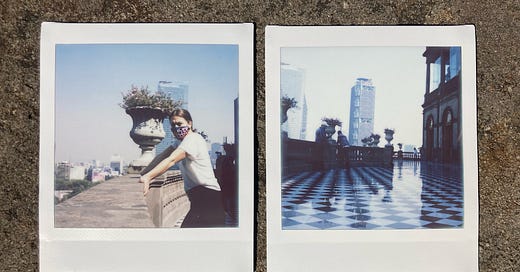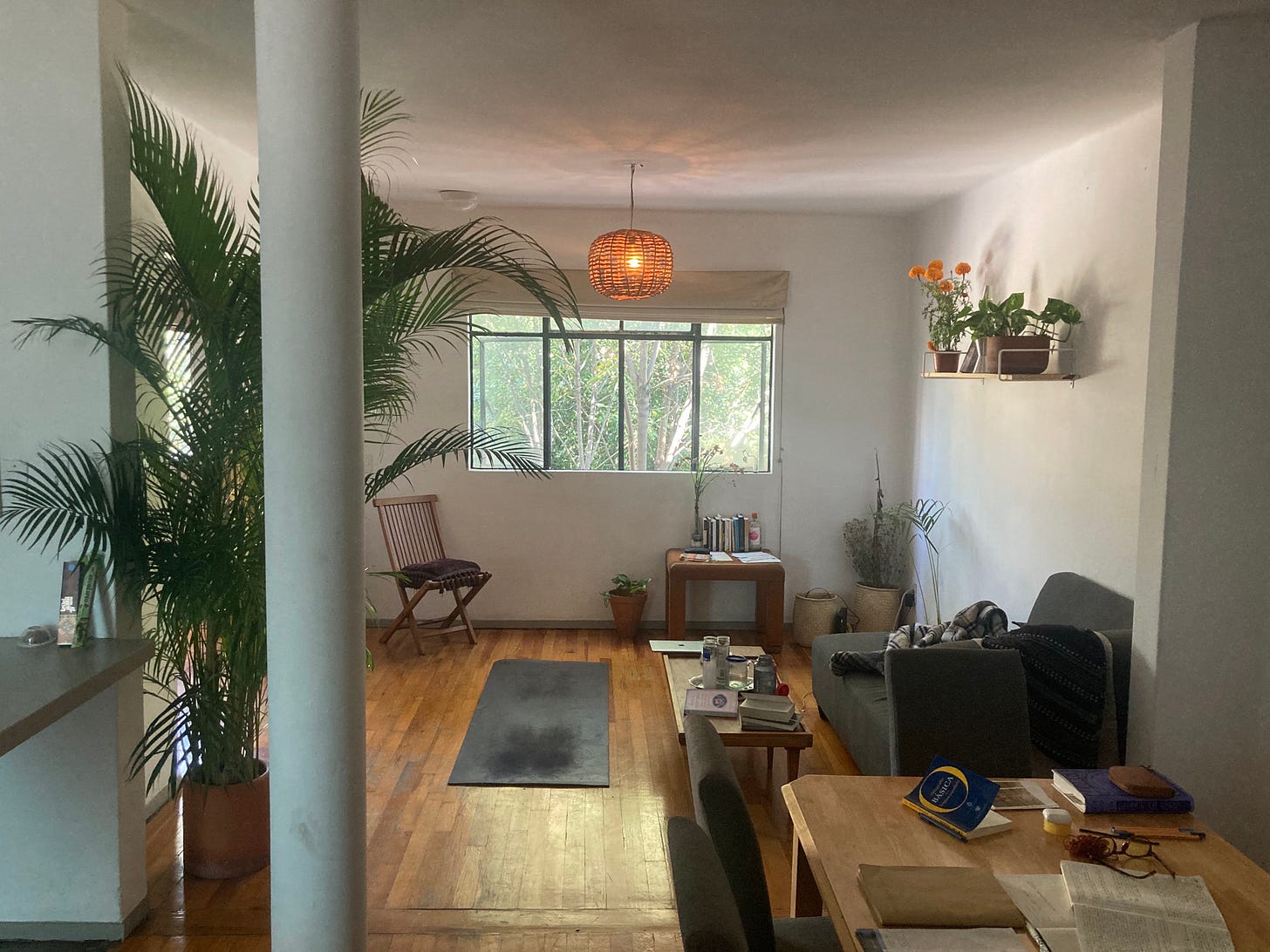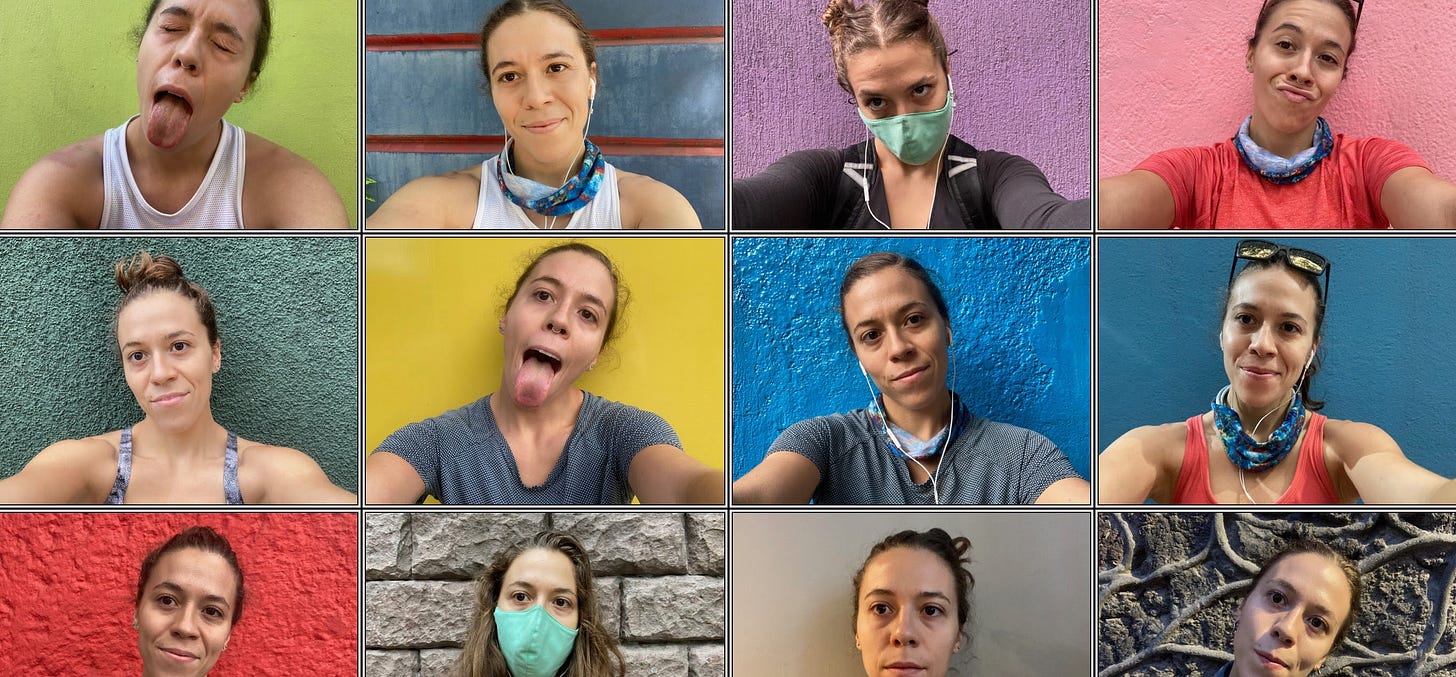Do I want to be a journalist or an artist?
"There is danger in letting other people define us." I invited my friend, Emma Murray, to write an essay about choosing her creative path.
My long distance bestie
once asked herself out loud during one of our regular video calls: “Do I want to be a journalist or do I want to be an artist?” She and I met in Boulder at an outdoor industry press event many years ago. We went on a few hikes and then I moved away and she stayed in Colorado, but our friendship flourished even when we were apart. Over writing, books, womanhood, balancing our fiery ambition with our deep need for rest, being highly sensitive, questioning the traditional forms of journalism. That’s all to say, I haven’t been able to get her question out of my head since that call, and it has shaped the way I approach my own identity as a journalist who has always wanted to be an artist.Emma is heading off to grad school soon to get her MFA in translation. We are so proud of her! I asked if she’d write an essay for Honing Her Craft about where she’s at with the question these days as she makes the big transition. Has she arrived at an answer for herself, and if so, how did she get there?
I'm a changeable feast, as are all of we apparently.
—Bella Baxter, Poor Things
“Do I want to be an artist or a journalist?” The question makes me think of Victor Frankenstein, the nineteenth-century twenty-something who toiled for months, stitching together a creature, sewing human and animal bits in a patchwork of parts from corpses that he harvested and dismembered by candlelight.
Sometimes, when people ask me who I am, or what I do, I imagine myself like him: standing and sweating over a life’s work. On my table lies no bodies, but an assemblage of ideas, educations, experiments, passions, and beliefs—all of which somehow take on a life, an agency of its own. My work can speak for itself. Do I have to know what it says? Does it say anything about me?
Journalist. Writer. Editor. Woman. Creative. Reader. Some days it feels good to have a label; comforting, almost, labels like snug blankets that help define me—showing me where I begin and where I end. But other days, I’m wiggly, and I want to stretch out my arms and run around. I just feel human, I don’t care about the labels, and somehow I know the terms will be there for me when I’m feeling snuggly again.
For a long time, I felt a sense of identity was important, but also elusive. (When can I call myself a writer? How often must I run to call myself a runner? Does someone else have to call me cool?)
A truth I’ve learned is that you can call yourself whatever you want.
But to be something, you have to do something. That’s much more interesting.
“Do I want to be an artist or a journalist?” is another way of asking: “What do I want to create in the world, and how do I want to create it?”
I was living in Mexico City when I first read Frankenstein. My then-boyfriend lent me his copy—a gorgeous edition illustrated by Spanish artist Elena Odriozola, which he told me was his favorite book. After Victor Frankenstein creates his creature, he abandons it—he’s scared of its form, and he flees. “The monster” is left to fend for itself, and only learns about the world through the way people treat him. He’s conditioned to think of himself as bad, unruly, ugly, fear-inducing—though he was not born with any of those qualities. He enters the world with curiosity and a longing for community. Society, however, rejects him, molds him into the monster he eventually portrays.
There is danger in letting other people define us. When I moved to Mexico City, I was on a sabbatical from my work as a local news and political journalist. The space I took from my reporting job afforded me the time and distance to examine myself anew. I began to tend to my burnout, and in the process, I decided to be brave.
I had been afraid of looking directly at what I’d created throughout my career. But with more than five years under my belt in the field, I finally forced myself to confront a mirror. My hair was thinning, and the circles beneath my eyes almost needed their own zip codes. Was this the life I really wanted? Why was I fighting so hard for it, and what was I even fighting? I wasn’t happy as a reporter. The stress of constant deadlines, projects with limited resources, an industry struggling to keep its head above water, the production of work for those who don’t seem to value my time—it all weighed on me, no matter how much I told myself I loved it. My courage came in the form of curiosity. I went back to my beginnings, and like Frankenstein’s monster or Bella Baxter in Poor Things, I simply asked myself questions.
Why did I become a journalist? What did it mean to me then, and what does it mean to me now?
Over the days walking Mexico City’s streets, the answers poured out multifold: I’d always wanted to be a writer (my childhood was full full full of reading), and journalism a direct way to write and pay my bills. Contributing to my community was a value my parents instilled early in me, and journalism was a direct way to give back to my city and help its people stay informed. So, I became a journalist because it was practical. It was honorable, respectable, contributory work.
And while there is a need for practical maneuvers in life, there also comes the need for detours and exploration. Otherwise, life gets rote, hard, and boring.
As I passed purple jacarandas in bloom and wandered beneath canopies of tropical trees in my neighborhood, more questions began to arise: What actually brings me joy? How much money do I need to make up my life? What can I do without? What should I do without? What am I afraid to let go? This is when I finally asked myself: What type of writer do I want to be? Do I want to be a journalist or an artist?
These questions that scared me most.
They drew into conflict my values, my dreams, and my realities. I’ve always wanted my words to mean something. Whether a piece of news, a poem, a string of dialogue—I always want my words to do, to move, to change something. That’s always felt like magic to me. Making something out of nothing. A bit of ink on paper catalyzing the human spirit. It’s a lofty goal, and still it’s stayed tethered to me all these years.
Having slowed down my life in Mexico City, I felt the tether pulling. Something was tugging me, and finally I was willing to see what it was. I turned and saw myself as though in a dream surrounded by literature. What dawned on me: I could be using journalism and news-writing to hide or shield the part of my heart that wants to be an artist.
Beyond its practical elements, I realized I’d felt a certain safety in journalism. To be a good journalist, one only needs to deliver the right facts in a cohesive manner. There is great room for craft, yet it comes with strict parameters. To be a good artist… to face a blank canvas… that feels so, so much harder. If my profession was going to be writing, journalism was the safer bet by all accounts.
But suddenly equipped with time to reflect, to think outside our fast-moving world, I was able to take a deep breath and meet my fears head-on: How would I define “safety” and “lucrative” and “good” in my own words, on my own terms? There was only one way to answer these, and I had to go out and try.
With my living expenses drastically reduced abroad, I could afford to experiment with taking my art seriously. With energy like that of Bella Baxter embarking in the world on her own for the first time, I wrote short stories and poems, produced translations of old and contemporary Spanish authors—all for fun, because my heart wanted it. And when my heart was happier, I grew happier, too.
Making a living via writing is hard—no matter the medium, form, or audience—and I concluded that if I would have to work hard for my life in words, I had to do it with my heart, otherwise it wouldn’t be sustainable. I couldn’t go back to writing news. I had to keep following the pull toward literature. I had to redefine myself, and through that process I was able to face my fears.
So what if I’m not a “good” artist by your standards? I find safety in my own sense of pride and accomplishment. What is lucrative to me may not be for you. I strive for days without stress, days filled with connection through words. I feel most rich when I have inner peace.
Upon my return from Mexico, I decided to quit my journalism career for good. I found a part-time job at a bookstore to supplement my income, and again I poured myself into my art. I took chances; I leapt across chasms I did not know I could clear; I fell a few times, yes, banged my knees and scraped my elbows—but I always got up. I feel a new well of energy, something that feeds my heart in ways I couldn’t access before. The fear has never fully abated, but my relationship to it is changed. I acknowledge when fear arises, and I try anyway.
I want to be an artist, so I am one.
I want to be a translator, so I translate. I want to be a novelist, so I write fiction. I’ve lived through griefs and joys so big I could burst, so I write poems. I’ve been desperate for cash and I love to read, so I edit books. I want to learn more, so I applied for and will be attending an MFA program this fall. As I stand over my creations, it’s not clear what I’ve made, or even what made what.
I am who I am because I am.
Or am I?
Who do I want to be?
Mary Shelley formatted Frankenstein as a tale that’s told between two siblings in a series of letters: Robert Walton is the captain of a ship bound for the north pole, where he meets Victor Frankenstein and learns of his monster and their life story. To his sister, Walton reflects on his own desire for a life of exploration and experimentation, lauding the boldness required.
“There is something at work in my soul which I do not understand,” he writes, and I, too, can relate. “I am practically industrious — painstaking, a workman to execute with perseverance and labour — but besides this there is a love for the marvelous, a belief in the marvelous, intertwined in all my projects, which hurries me out of the common pathways of men, even to the wild sea and unvisited regions I am about to explore.”
Emma Murray writes the Substack newsletter .








Beautiful essay! 👏 Definitely resonated with me